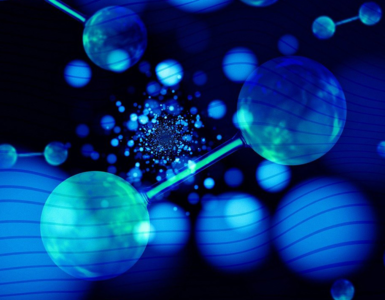Scientists develop a solar-powered artificial LEAF that takes in water and produces hydrogen gas when exposed to sunlight.
A small circular device inspired by a leaf can extract water from air to produce a clean energy source, a new study shows.
The ‘transparent porous conductive substrate’ (TPCS) is a small circle of compressed glass fibre, coated with a thin layer that absorbs light.
When the device is exposed to sunlight, it takes water from the air and produces hydrogen gas, which could potentially be used as fuel.
🔥 What about we co-host a webinar? Let's educate, captivate, and convert the hydrogen economy!
Hydrogen Central is the global go-to online magazine for the hydrogen economy, we can help you host impactful webinars that become a global reference on your topic and are an evergreen source of leads. Click here to request more details
The hydrogen gas could be extracted and stored in large facilities and used when needed, such as for powering cars or heating homes, researchers say.
The research has been conducted by chemical engineers at Ecole Polytechnique Fédérale de Lausanne (EPFL) in Switzerland.
‘To realise a sustainable society, we need ways to store renewable energy as chemicals that can be used as fuels and feedstocks in industry,’ said study author Professor Kevin Sivula at EPFL.
‘Solar energy is the most abundant form of renewable energy, and we are striving to develop economically-competitive ways to produce solar fuels.
The team were inspired by ‘how a leaf works’, namely photosynthesis – the process by which plants use sunlight, water and carbon dioxide to create oxygen and energy in the form of sugar.
Scientists have already performed ‘artificial photosynthesis’ by generating hydrogen fuel using sunlight and liquid water using a device called a photoelectrochemical (PEC) cell.
But Professor Sivula wanted to show that the PEC technology can be adapted for harvesting water vapour from the air, instead of from liquid water, which could lead to more use cases, such as in humid environments.
To make their TPCS, they started with a type of glass wool, an insulating material made from glass fibre that has a similar texture to textile wool.
The glass wool was processed in a commercial kitchen blender and compressed into circular felt ‘wafers’ by fusing the fibres together at high temperature.
Next, each wafer was coated with a transparent thin film of tin oxide, an inorganic compound known for its excellent conductivity.
They ensured the coating was porous in order to increase its surface area and maximise contact with water in the air.
The wafer was then coated again with a chemical compound called copper(i) thiocyanate, a sunlight-absorbing semiconductor material.
This second thin coating still lets light through, even though it appears opaque.
‘The semiconductor absorbs the light, so it appears dark,’ Professor Sivula told MailOnline.
‘Importantly, we do not want light absorption by the electrode without the semiconductor coating as this would mean that it cannot absorb very much light.’
The scientists went on to build a small chamber containing the coated wafer, intended to collect the hydrogen.
Researchers say the system works in humid environments where there is a high amount of water vapour in the surrounding air.
This could make it ideal for installation in high humidity countries such as India, Malaysia, the Philippines and Indonesia.
Potentially, large facilities containing the system could operate in remote areas in these countries, giving cars a supply of hydrogen fuel, for example.
‘In a future implementation of this technology, hydrogen collection would be needed,’ said Professor Sivula.
‘However, the chamber could be as simple as a plastic bag or sleeve that would contain the produced gases.’
The team’s study, published in the journal Advanced Materials, marks ‘only a first stage’ in rolling out this technology.
‘The overall solar to hydrogen efficiency is still quite low, but our invention of the TPCS now opens the door to advance this technology further,’ Professor Sivula said.
The researcher said TPCS is currently at a low ‘technology readiness level‘, so 10 years or more would be needed to realise a practical device, he estimated.
At the moment there is no precise information on how much a rollout would cost, although Professor Sivula said the device uses inexpensive materials and processing techniques.
Highlights:
- Small circular device extracts vapour in the air and turns it into hydrogen gas
- Researchers were inspired by how a leaf uses sunlight and CO2 to make energy
- They say their device marks a step towards extracting solar fuels out of thin air
READ the latest news shaping the hydrogen market at Hydrogen Central
A step closer to making fuel from thin air: Scientists develop a solar-powered artificial LEAF that takes in water and produces hydrogen gas when exposed to sunlight, January 6, 2022








